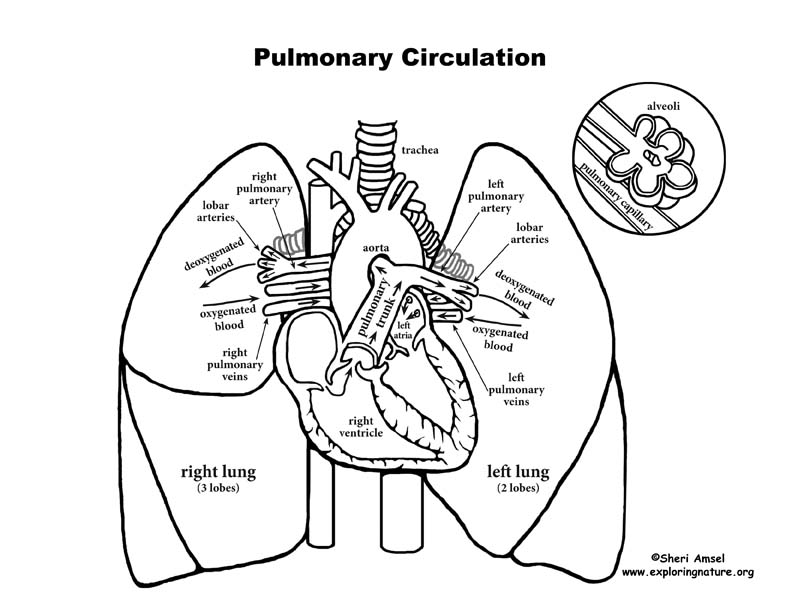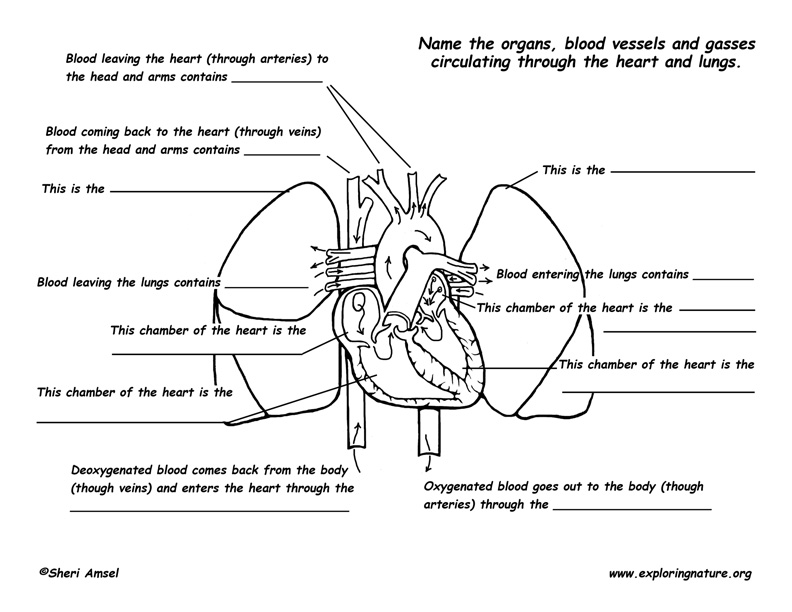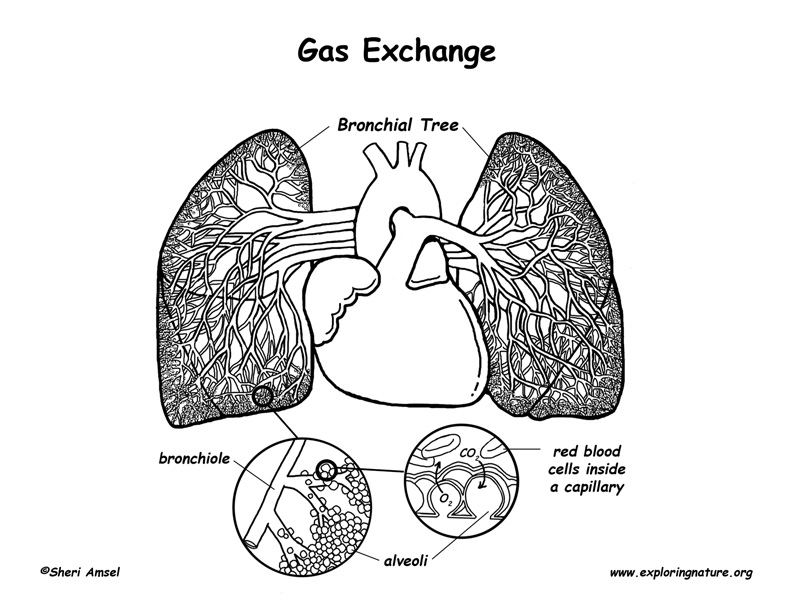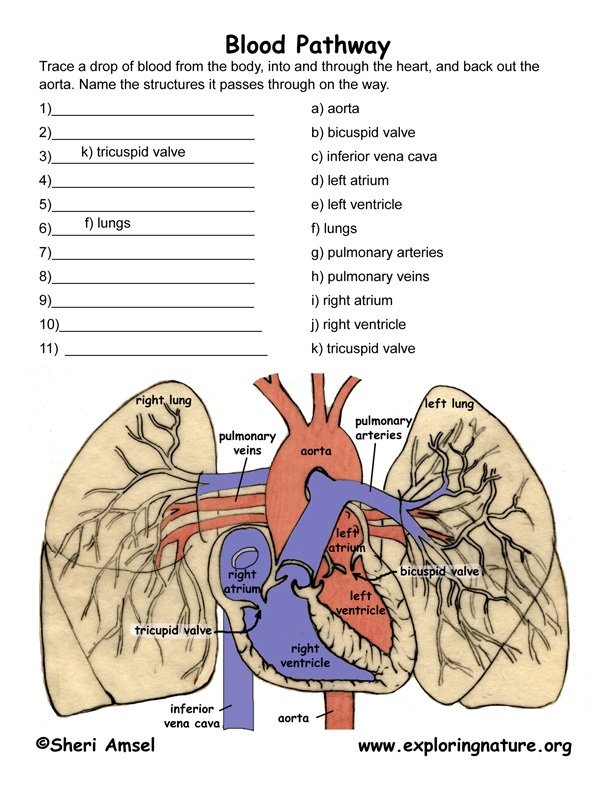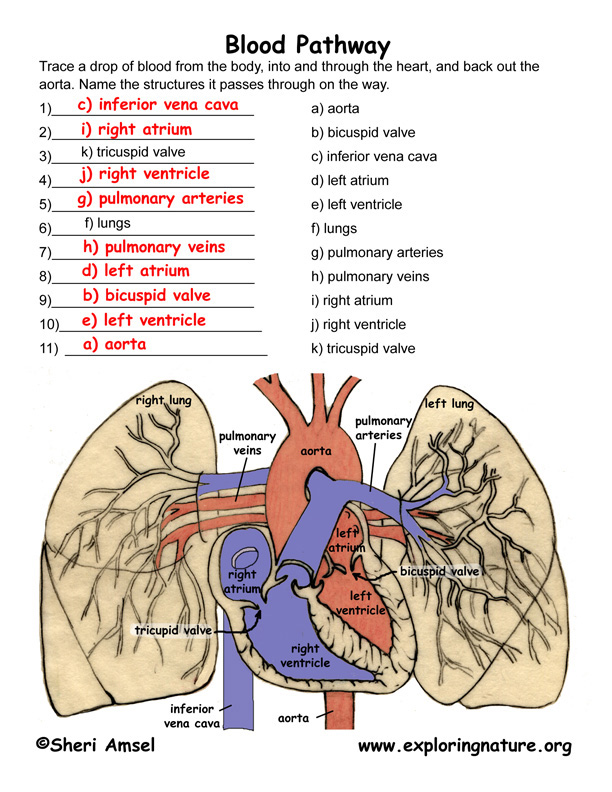

* Our Advanced Anatomy content is developed for High School and/or Introductory College Level Students.
Blood circles through the heart, which pumps it to the lungs where it picks up oxygen - this is the pulmonary circulation. The heart then pumps the oxygen-rich blood to the rest of the body - this is the systemic circulation.
Pulmonary Circulation
Function: Pulmonary Circulaton brings blood into contact with alveoli in the lungs for gas exchange (this is the only place in body where arteries carry O2 poor blood and veins carry the O2 rich blood).
The atria of the heart are separated from the ventricles by doorways called valves. Valves are important because they keep the blood flowing forward. The circulation of the blood through the heart starts when blood comes back to the heart through two big veins called the vena cava.
> The blood then flows into the right atrium.
> Then it passes through the tricuspid (3-cupped) valve into the right ventricle.
> From there, it is pumped through the pulmonary arteries to the lungs. In the lungs, it picks up oxygen and drops off carbon dioxide.
In the Lungs:
> pulmonary arteries enter lungs and divide into lobar arteries (3 on right, 2 on left - 1 per lobe)
> lobar arteries accompany the main bronchi into lungs and then branch into arterioles
> arterioles divide into pulmonary capillaries (a dense network clinging to the alveoli of the lungs) - Oxygen (O2) exchange occurs here.
> Oxygen rich blood (bright red) drains from capillaries into venules
> venules join to form into two pulmonary veins in each lung (4 total)
> Then it comes back to the heart through the 4 pulmonary veins and flows into the left atrium.
> Then it goes through the bicuspid (2-cupped) valve (also called the mitral valve) into the left ventricle.
> The left ventricle, the most muscular and powerful chamber in the heart, pumps the blood through the aorta, the largest artery in the body.
From here, the blood flows to the whole body, bringing oxygen to the tissues that need it. This is called the Systemic Circulation.
When you research information you must cite the reference. Citing for websites is different from citing from books, magazines and periodicals. The style of citing shown here is from the MLA Style Citations (Modern Language Association).
When citing a WEBSITE the general format is as follows.
Author Last Name, First Name(s). "Title: Subtitle of Part of Web Page, if appropriate." Title: Subtitle: Section of Page if appropriate. Sponsoring/Publishing Agency, If Given. Additional significant descriptive information. Date of Electronic Publication or other Date, such as Last Updated. Day Month Year of access < URL >.
Amsel, Sheri. "Pulmonary Circulation - Through Heart and Lungs (Advanced*)" Exploring Nature Educational Resource ©2005-2024. December 13, 2024
< http://www.exploringnature.org/db/view/Pulmonary-Circulation-Through-Heart-and-Lungs-Advanced >
